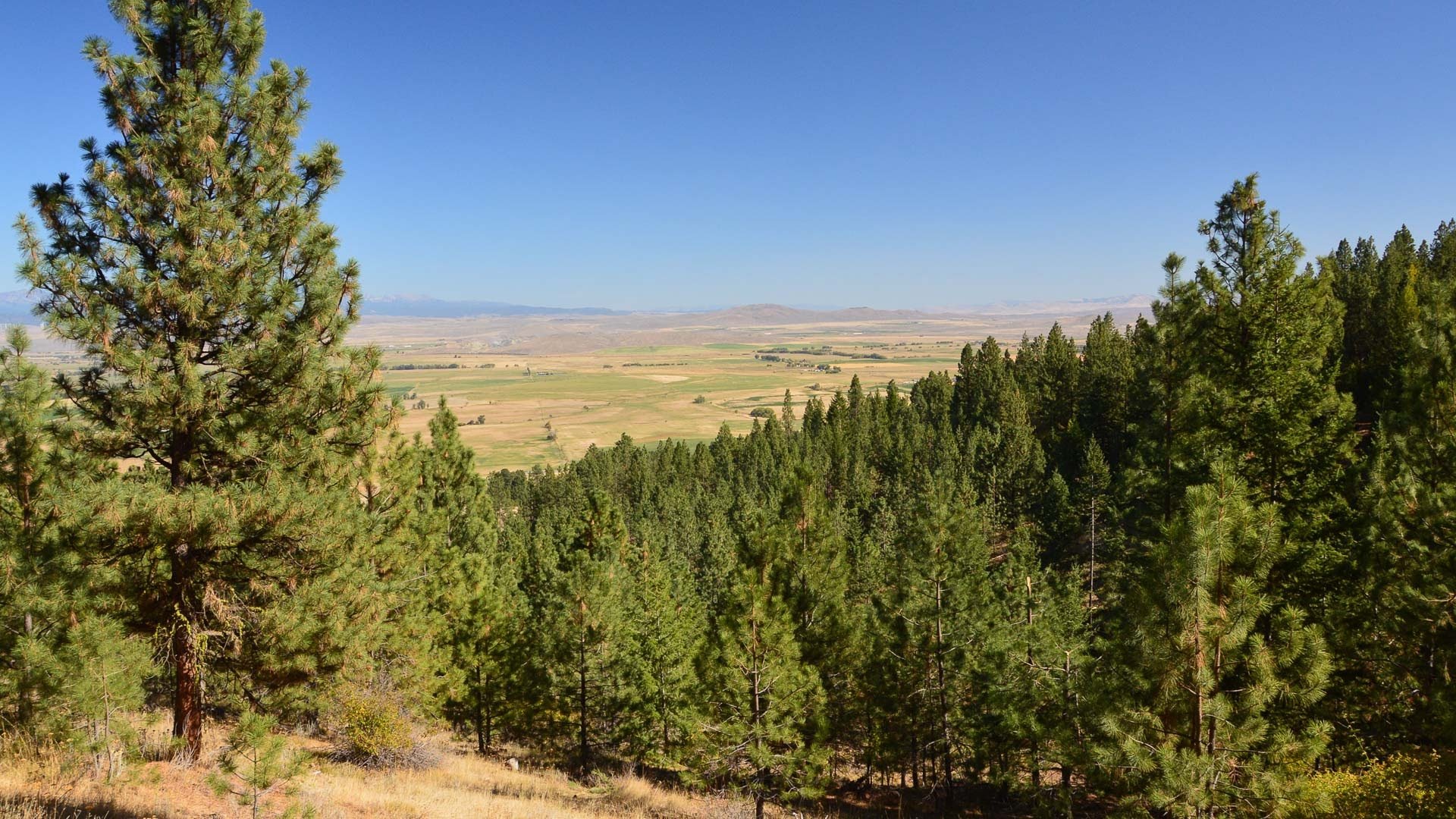
Prescribed Fire
A prescribed burn consumes dead trees and grass, smaller and weaker trees, and thick undergrowth on the forest floor without harming the healthy, living trees and plants.
Before a prescribed burn is ignited a plan is written by a team of professionals to ensure the fire will achieve its intended goals without posing unnecessary threat to the public, to fire managers, or to natural resources. The plan includes details on how big the fire will be, what it will burn, what managers hope to accomplish with the fire, how the smoke from the fire will be managed, and how to inform the public about the burn.
Two types of prescribed burning are commonly in the Blue Mountains: 1) broadcast burning, which involves lighting fires across a tract of land, and 2) pile burning, which includes stacks of vegetation and tree debris that are burned individually.
Impacts of smoke and “what good smoke” is:
Wildfires can release millions of metric tons of carbon dioxide, black carbon, brown carbon, ozone, and toxic compounds into the atmosphere. These emissions affect the regional and global climate, pollute water and soil, and can endanger the health of our communities. See https://nyti.ms/3hXnVPp
Prescribed burns are carefully planned and include objectives to burn at lower intensity under favorable weather conditions.
Thus, prescribed fire smoke usually has less impact on air quality (and the impacts are shorter lived) than does wildfire smoke.
Wildfire smoke, on the other hand, may last for days or weeks at much higher concentrations and with more severe air quality impacts for people.
Prescribed fires typically expose people to fewer negative health effects than large wildfires.
All prescribed burns on federal, industrial, and private forestland must comply with the Washington and Oregon Smoke Management Plans, depending on which state the prescribed fire is lit in. These plans incorporate weather forecasting and a wide range of best practices for prescribed fire use intended to minimize smoke impacts to communities and people.
Benefits of controlled burning:
By reducing the amount of fuel (dead leaves, tree limbs, grass and shrubs, etc.) in forests, prescribed burns can reduce the risk of large, destructive wildfires
Prescribed fire can help reduce some destructive insect populations, and in some cases can help manage invasive plants
It can return nutrients and carbon to the soil
The additional sunlight and open space in a forest can promote regeneration of young trees and other vegetation, which improves and increases forage for some wildlife species
Some plants and trees require fire to release their seeds to reproduce (e.g. lodgepole pine)
Context/limitations:
Not all forested areas are well suited to prescribed burning.
Thinning or other fuels treatments may be needed before implementing prescribed burning, in order to modify the fuels for a more manageable fire.
Prescribed burning can aggravate issues with some invasive plant species (e.g. cause in increase in the dominance of the invasive plant species on that site)
Commonly asked questions:
-
Thinning is most effective at reducing wildfire risk if combined with effective slash treatment. (Slash is the limbs, tree tops, small trees, etc. removed in a thinning or other harvesting operation.) Thinning that leaves slash changes the arrangement of the fuels, but doesn’t immediately change the amount of fuel available to burn. Burning (either of piles or by broadcast) is the most common, and typically the most cost-effective, way to dispose of slash.
Some areas will be treated by thinning alone, indefinitely, because broadcast burning would present unacceptably high risk. These areas may still utilize pile burning, or may masticate, chip, or haul away slash.
At the landscape scale, we have far more forest in need of treatment than can possibly be managed by thinning alone. We can’t afford to thin everywhere, and will need to utilize prescribed fire in the form of broadcast burns to accomplish restoration objectives. Our forests are adapted to fire as one of their essential disturbance mechanisms, so there’s also a strong ecological argument for using fire as a management tool rather than continuing our strong emphasis on fire suppression.
Given the changes in our forests’ conditions and in our climate, it is no longer feasible to continue suppressing fire at the scale we have been - we need to shift our perspective from seeing fire as something to stop to seeing it as a natural and valuable aspect of our ecosystem. Prescribed fire (and the managed use of naturally occurring fire) gives us opportunities to choose when and where fire impacts our landscape, thus reaping fire’s ecological benefits while mitigating risk.
-
After 100 years of fire suppression many forest stands are so thick that applying fire before mechanically removing some of the trees (particularly small, young trees) and brush would result in undesired high-intensity fire. Some areas are no longer well suited to fire, either because of their proximity of homes or infrastructure, or because plant communities have been altered to the point that fire would have undesired consequences (such as favoring invasive species).
-
No combination of treatments (short of completely and permanently removing all combustible materials) will fireproof a forest or other environment. Restoration treatments seek to reduce risk of uncharacteristically intense wildfire, rather than setting the unachievable goal of completely eliminating it.
